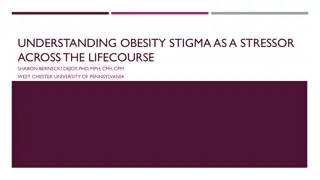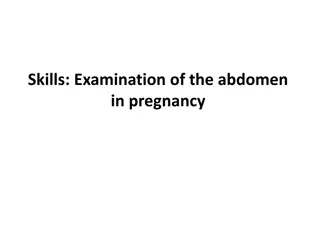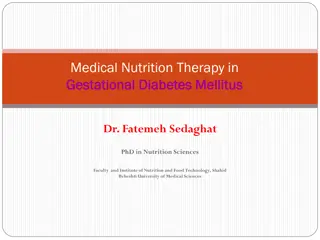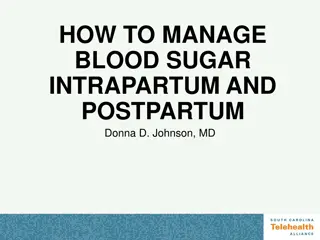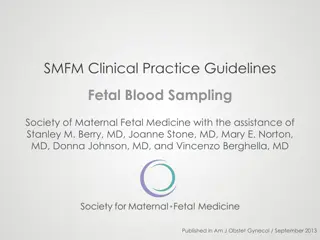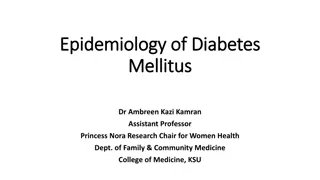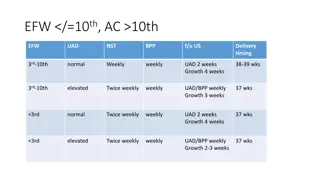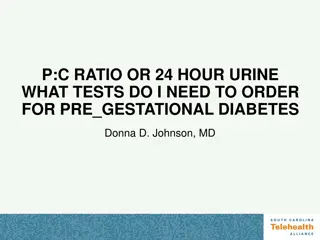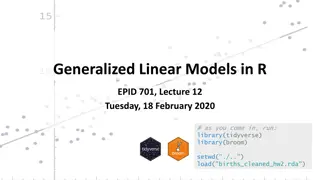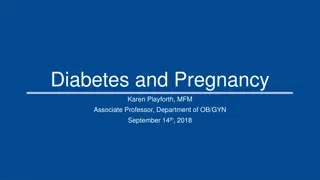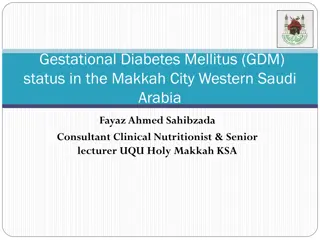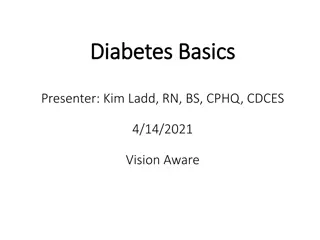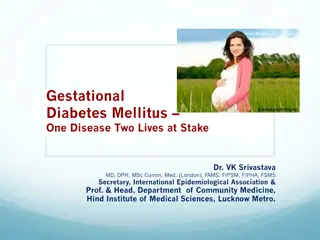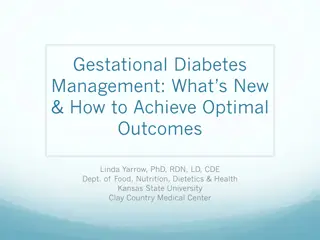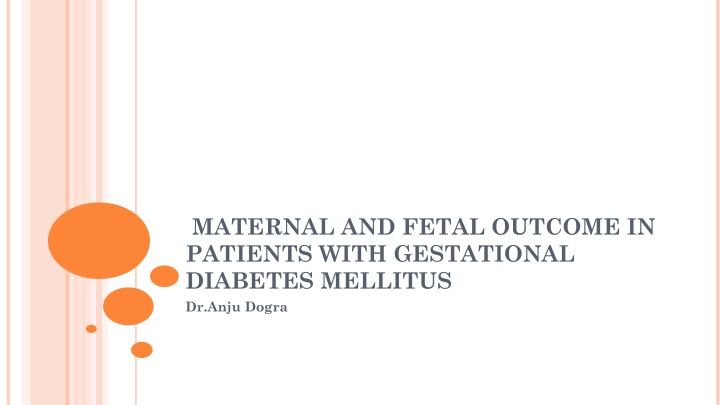
Maternal and Fetal Outcomes in Gestational Diabetes Mellitus Patients with Dr. Anju Dogra
Explore the impact of gestational diabetes mellitus on maternal and fetal health outcomes, including risks of complications and the importance of blood glucose control during pregnancy. This study aims to investigate the outcomes in patients managed at SMGS Hospital, Jammu, from January to September 2020. High-risk factors for GDM are discussed, emphasizing the need for early screening and management to reduce risks to both mother and baby.
Download Presentation

Please find below an Image/Link to download the presentation.
The content on the website is provided AS IS for your information and personal use only. It may not be sold, licensed, or shared on other websites without obtaining consent from the author. If you encounter any issues during the download, it is possible that the publisher has removed the file from their server.
You are allowed to download the files provided on this website for personal or commercial use, subject to the condition that they are used lawfully. All files are the property of their respective owners.
The content on the website is provided AS IS for your information and personal use only. It may not be sold, licensed, or shared on other websites without obtaining consent from the author.
E N D
Presentation Transcript
MATERNAL AND FETAL OUTCOME IN PATIENTS WITH GESTATIONAL DIABETES MELLITUS Dr.Anju Dogra
INTRODUCTION Gestational Diabetes Mellitus(GDM) is characterized by carbohydrate intolerance of varying severity with onset or first recognition during pregnancy(1). It s increasing prevalence results in significant short and long term impairments in the individual s health and their offspring s health. Women with GDM are expected to have increased risk for the development of gestational hypertension or pre-eclampsia(2). GDM is associated with an increased risk of maternal and fetal complications
The rate of caesarean section is increased in the mother and the risk of macrosomia is increased in the new born(3). The blood glucose control during pregnancy significantly reduces neonatal complications like macrosomia and shoulder dystocia.
AIMS AND OBJECTIVES To study the maternal and fetal outcome in patients with gestational diabetes mellitus (GDM).
MATERIAL AND METHODS STUDY DESIGN: retrospective cohort study PLACE : SMGS Hospital, Jammu TIME PERIOD : January 2020 to September 2020. Inclusion criteria: patients with GDM who were managed and delivered in our hospital. Exclusion criteria: Patients with pregestational diabetes
Pregnant women who had normal OGTT were taken as controls. They were matched for age and parity. A total of 278 patients were recruited in the study: Group A: 139 patients with GDM Group B: 139 patients without GDM All pregnant women were screened in the first antenatal visit using Fasting Blood Glucose(FBG) values. If the FBG at the first visit was normal, 75g OGTT was performed at 24 weeks. In high risk patients, 75g OGTT was performed as early as pregnancy is confirmed and if normal was repeated at 24 weeks of gestation.
High risk patients are defined as women with a history of unexplained still birth, IUFD or unexplained neonatal death birth of a baby with malformations associated with diabetes women with history of birth of a macrosomic baby weighing more than 4 Kgs women with BMI more than 25 Kgs/m2 women with a history of PCOD.
The WHO criteria: FBG 5.1-6.9 mmol/L(92-125 mg/dL) 1hr plasma glucose > 10.0 mmol/L(180mg/dL) following a 75g oral glucose load 2hr plasma glucose 8.5-11.0 mmol/L(153-199mg/dL) following a 75g oral glucose load is used to diagnose GDM at anytime of pregnancy.
A note of medical co-morbidities was also made if present. Height, weight, blood pressure, HbA1c, 24hrs urinary proteins were also done in all the patients. Maternal complications which were noted during pregnancy included pre-eclampsia and complications during labor included Unsatisfactory progress of labor Pre-mature rupture of membranes Perineal tear Shoulder dystocia
Neonatal complications which were noted included Prematurity Respiratory distress Hypoglycemia(Plasma glucose levels< 45mg/dL) Fetal demise Congenital anomalies
RESULTS Table 1 Clinical characteristics of the women with GDM and controls Characteristics Average age in years(SD) Median gravidity GDM(n=139) Controls(n=139) 27.9(3.8) 28(4.4) 2 2 Previous GDM, n(%) First degree relative with diabetes, n(%) Bad obstetric history Hypertension, n(%) Gestational Chronic Hypothyroidism BMI(Kg/m2) 20(14) 0 60(43) 25(18) 30(21.5) 12(8.6) 35(25) 9(6) 42(30) 28.8 10(7.1) 0 16(11.5) 25
TABLE 2. MATERNAL AND NEONATAL COMPLICATIONS AMONG CASES AND CONTROLS Complications GDM Women n=139, n(%) 47(34) Controls n=139, n(%) 15(11) Maternal complications Complications during pregnancy Pre-eclampsia Complications during labor Unsatisfactory progress of labor PROM Perineal tear Shoulder Dystocia 12(9) 2(1) 31(22) 20(14) 13(9) 10(7) 6(4) 2 3 3(2) 0 0 Neonatal Complications Prematurity Respiratory Distress Hypoglycemia Fetal demise Congenital anomalies 26(18) 6(4) 15(11) 6(4) 4 2 10(7) 4(3) 6(4) 0 0 0
TABLE 3 MODE OF DELIVERY Mode of delivery Cases [n=139, n(%)] Controls [n=139, n(%)] Caesarean section Emergency Elective 61(44) 25(18) 36(26) 31(22) 20(14) 11(8) Vaginal Delivery 78(56) 108(77)
DISCUSSION Universal screening as is advised, if practiced will allow early diagnosis. The women with GDM had higher BMI as expected. The incidence of gestational diabetes increased with increasing maternal BMI. Eighteen percent of the women had a BOH. It has been reported that mothers with a BOH have a slightly higher incidence of gestational diabetes. Thirty-one percent women had associated HTN. Nine percent had chronic HTN. The presence of chronic HTN increases the risk of developing GDM. However, the outcome is unaffected in women with chronic HTN and GDM like the results of study done by Leon MG, Moussa HN, Longo M et. al. Sixty-five percent of the women received insulin for blood sugar control. Maternal hypoglycemia had been noted in 7 (5%) women. This could not be compared with the previous studies as they had not reported on maternal hypoglycemia.
Preeclampsia occurred in 9% of the women. In the trial done by Crowther et al., pre-eclampsia occurred in 12% of the women in the intervention arm. However, Bhat et al. have reported a much higher (29%) rate of preeclampsia in GDM from Thiruvananthapuram. The rate of cesarean section is in general increased in GDM. The rate of cesarean section noted in this study was 44%. In studies by Bhat et al. and Sreelakshmi et al., it has been reported to be 40% and 33%, respectively. In our study, shoulder dystocia was seen in 3(2%) cases. It has been previously reported to be 1.4% in treated women with GDM by Wahi et al. Respiratory distress was the most common complication (11%) noted here. A similar proportion has been reported in the study by Sreelakshmi et al and Crowther et al. Neonatal hypoglycemia occurred in six newborns (4%) in this study. This outcome can be improved by adherence to current blood sugar control recommendations.
CONCLUSION All pregnant women should be screened for glucose intolerance since selective screening based on clinical attributes or past obstetric history has been shown to be inadequate. Early screening for gestational diabetes especially in high risk patients should be done for a better maternal and neonatal outcome. Pregnant women with GDM should deliver at health facilities to properly manage any complication if occurs during delivery. Pregnant women with GDM should be managed by a team of obstetrician, diabetologist and neonatologist.
LIMITATION OF STUDY sample size and duration of study : small Further studies are recommended on the larger sapmle size with longer study duration
REFERENCES 1. Joanna Girling, Anne Dorn horst. Pregnancy and diabetes mellitus. In: John C Pick Up, Gareth Williams (eds) Textbook of Diabetes. 3rded. Blackwell publishing company; 2003: 65-6. 2. Bryson CL, Ioannou GN, Rulyak SJ, Critchlow C. Association between gestational diabetes and pregnancy-induced hypertension. Am J Epidemiol 2003;158:1148-53. 3. Kampmann U, Madsen LR, Skajaa GO, Iversen DS, Moeller N, Ovesen P. Gestational diabetes: A clinical update. World J Diabetes 2015;6:1065-72. 4. WHO Diagnostic Criteria and classification of hyperglycemia first detected in pregnancy Geneva: WHO; 2013. 5. Leon MG, Moussa HN, Longo M, Pedroza C, Haidar ZA, Mendez-Figueroa H, et al. Rate of gestational diabetes mellitus and pregnancy outcomes in patients with chronic hypertension. Am J Perinatol 2016;33:745-50
6. Crowther CA, Hiller JE, Moss JR, McPhee AJ, Jeffries WS, Robinson JS; Australian Carbohydrate Intolerance Study in Pregnant Women (ACHOIS) Trial Group. Effect of treatment of gestational diabetes mellitus on pregnancy outcomes. N Engl J Med 2005;352:2477-86. 7. Bhat M, Ramesha KN, Sarma SP, Sangeetha Menon SC, Kumar G. Determinants of gestational diabetes mellitus: A case control study in a district tertiary care hospital in South India. Int J Diabetes Dev Ctries 2010;30:91-6. 8. Sreelakshmi PR, Nair S, Soman B, Alex R, Vijayakumar K, Kutty VR. Maternal and neonatal outcomes of gestational diabetes: A retrospective cohort study from Southern India. J Family Med Prim Care 2015;4:395-8. 9. Wahi P, Dogra V, Jandial K, Bhagat R, Gupta R, Gupta S, et al. Prevalence of gestational diabetes mellitus (GDM) and its outcomes in Jammu region. J Assoc Physicians India 2011;59:227-30. .


